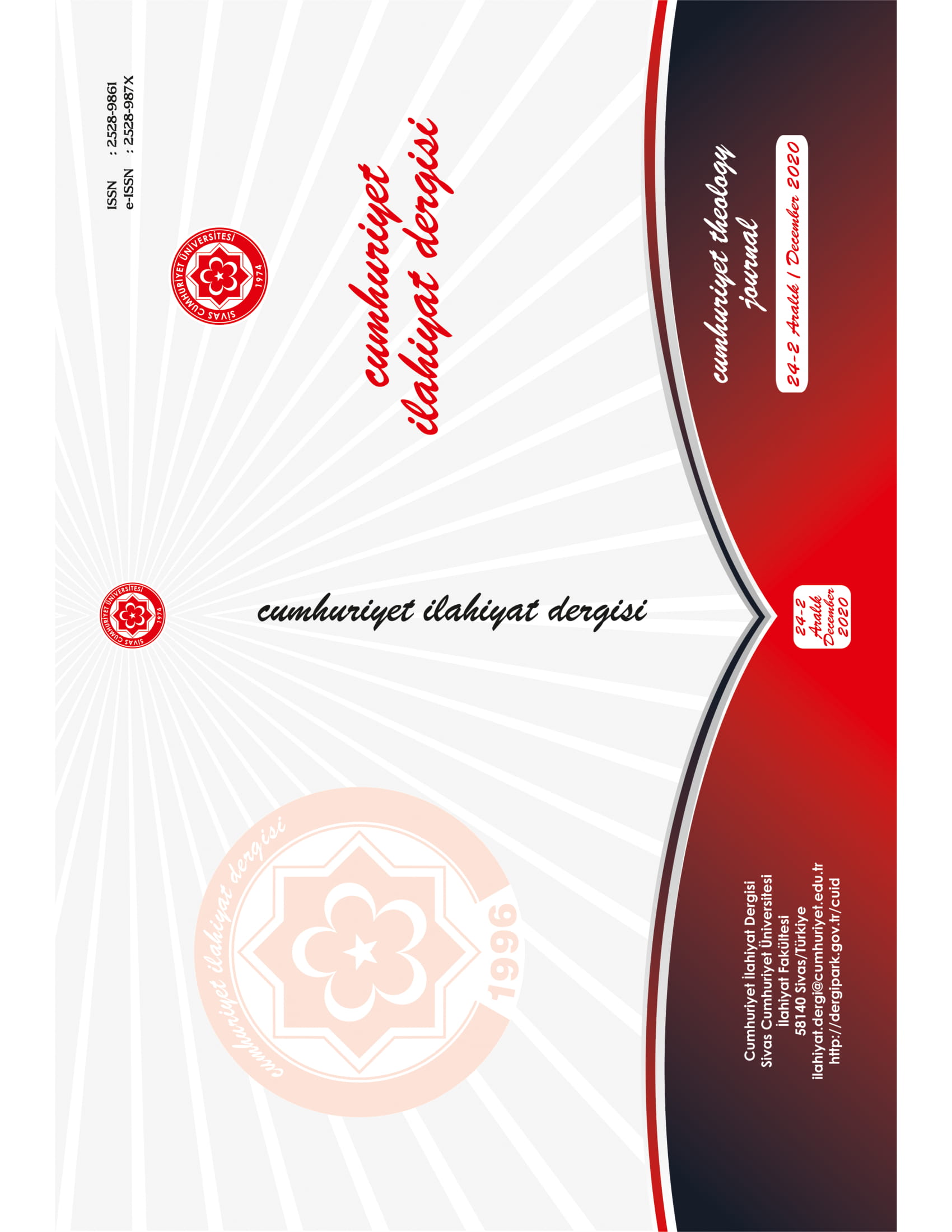İmparatoriçe İrene’nin Yasa Eklerine Göre Roma Hukukunda Kitab-ı Mukaddes İzleri
Bible Traces in Roman Law According to the Law Appendices of Empress Irene
Author(s): Talat KoçakSubject(s): History of Law, Theology and Religion, Islam studies
Published by: Cumhuriyet Üniversitesi İlahyat Fakültesi
Keywords: History of Religions; Irene; Icon-breaking; Roman Law; Marriage; Slavery;
Summary/Abstract: Roman Law is an important legal systematic that contains important codings of world law history. This legal system not only affected Continental Europe, but also the Near East, which was a period under its domination. Especially in the Justinian period, the law collection that emerged as a result of the legal studies starting from the East Roman capital is considered as a monumental work by many historians and jurists. Researchers who praise Corpus Juris Civilis are right. However, this selection, which is one of the most effective law coding, is far from being practical. For this Leo III prepared his law book called Ecloga. Referred to as the first Christian law book, this work was later expanded with some additions. Ecloga was given its final shape during the period of Empress Irene. Irene is one of the strongest female figures in Roman history. Emperor Constantine V married his son Leo (who is from his first wife Çiçek Hatun, the Caspian Princess) to Irene. Irene was the daughter of an ordinary family. She was Athenian as origin. However, Athens was not a city as flashy as it was in ancient times. At the same time, the Athenians were against icon-breaking, which was the official ideology of the empire. It was really interesting that Irene was chosen by Constantine V as wife for his son Leo. After the death of Constantine V, Leo IV acceded to the throne without any problems. The fact that Leo IV had chronic tuberculosis prevented him from state administrations. Actually, it was Irene who filled in this gap. After the early death of Leo IV, due to the aforementioned disease, his 10-year-old son Constantine VI became officially regent. After killing her son by abacina-tion Irene became the sole owner of the throne. In the ongoing process, she abused law and religion to maintain her power. Irene’s first law supplement was on oaths. There were many references to the Holy Book in the annex of this law. It was mentioned that it is not a sin to swear in the Old Testament, but it is now forbidden to swear with the New Testament. In addi-tion, the law stipulates that the oath is the way to deny God precisely after lying. However, it was claimed that the oath tradition to the Roman society passed through the Hebrews. Un-doubtedly, Irene used the text of this law to prove that the oath of devotion of the majority of the eastern Roman army, allegedly to her son Constantine VI, was invalid. Because in the Ro-man army, fulfilling the necessary oath and loyalty to the emperor were in front of everything. It was possible for the empress to take over the throne with this proclaimed law article that the vows of the soldiers who swore in order to remain committed to Constantine VI within the army were void. It is obvious that Irene was trying to prevent a possible coup attempt within the army. The empress’ second annex to the law concerns those who married for the third time. The law was titled “About those who illegally contract to third or later marriages and about those who marry their own slaves”. In Christianity, it was allowed to marry for the sec-ond time after the death of one of the spouses. There were certain phrases that marriages to be held for the third time in the Holy Book were forbidden. It is clear that Irene had a political benefit in reminding this ban. Because her power was based on her marriage with Leo, who was the son of Constantine V from his first wife. Their rivals were the sons of Constantine V from his third marriage. Therefore, with this law, she eliminated her political rivals.
Journal: Cumhuriyet İlahiyat Dergisi
- Issue Year: 24/2020
- Issue No: 2
- Page Range: 735-748
- Page Count: 14
- Language: Turkish

